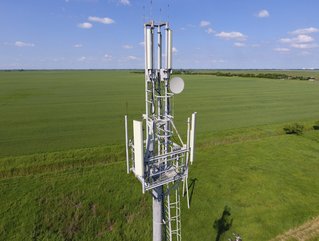Vodafone launches wind and solar-powered mobile phone mast

Vodafone has switched on the UK’s first live wind- and solar-powered mobile phone mast in Pembrokeshire, Wales. The mast will provide 4G coverage to the community of Eglwyswrw (egg-lis-oo-roo).
The specially designed mast, which Vodafone says potentially removes the need for a connection to the national electricity grid, could provide connectivity to ‘not-spots’ in the UK’s most remote and inaccessible locations – helping the industry achieve 95% of UK landmass coverage by 2025. It also aims to help Vodafone reduce carbon emissions and support its target of reaching net zero UK operations by 2027.
The ‘self-powering’ mast incorporates a Crossflow Energy wind turbine that can generate power in light winds and, according to Vodafone, the mast can be installed without the need to dig trenches and lay electricity cables, making it faster and easier to install and reducing the impact on the local environment.
The trial, in partnership with wind turbine technology specialists Crossflow Energy and mobile infrastructure partner Cornerstone, is at Home Farm in the village of Eglwyswrw. It will run for two years and data gathered will help Vodafone optimise the technology and determine which sites are most suitable for ‘self-powering’ masts.
Bringing mobile and internet services to rural communities helps boost the local economy, tackle isolation and close the rural digital divide. To date, building masts in coverage ‘not spots’ without an existing electricity connection has been a significant financial and logistical challenge.
Andrea Dona, Chief Network Officer and Development Director, Vodafone, said: “Connectivity is vital to everyone, no matter where you live. This self-powering mobile phone mast, with on-site battery storage, could help us connect places that were previously impossible to reach. It will also help us reduce carbon emissions and minimise our impact on local environments.
“If this trial is a success, we would like to roll out more ‘self-powering’ masts, with a focus on areas with poor or no coverage.”
Martin Barnes, CEO, Crossflow Energy, said: “We are incredibly excited to be partnering with Vodafone on this UK first. Until now, the use of ‘small wind’ turbines in the race to net zero has been limited due to issues of performance, reliability, and planning concerns, such as noise, vibration, and damage to ecology.
“The unique design of our wind turbine addresses all these challenges head on. We believe that one day its use could be as widespread and commonplace as solar panels.”






